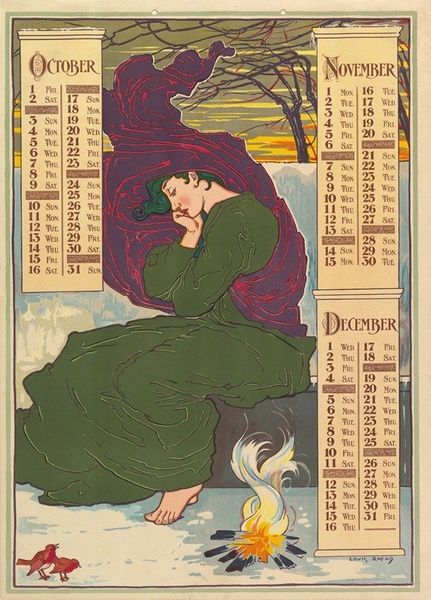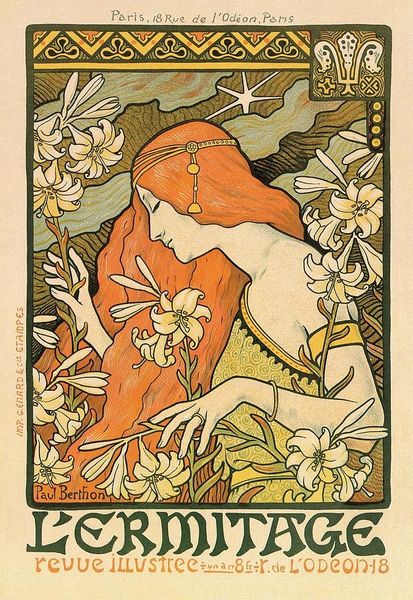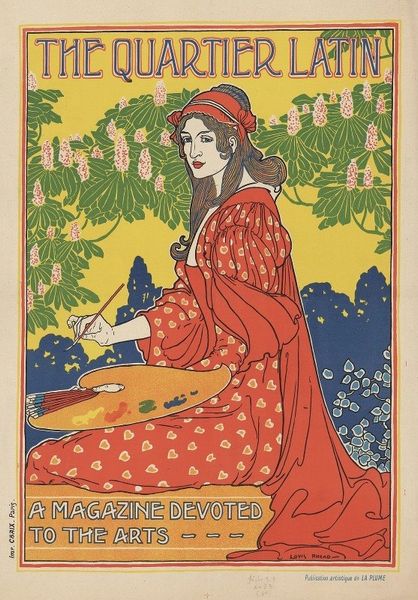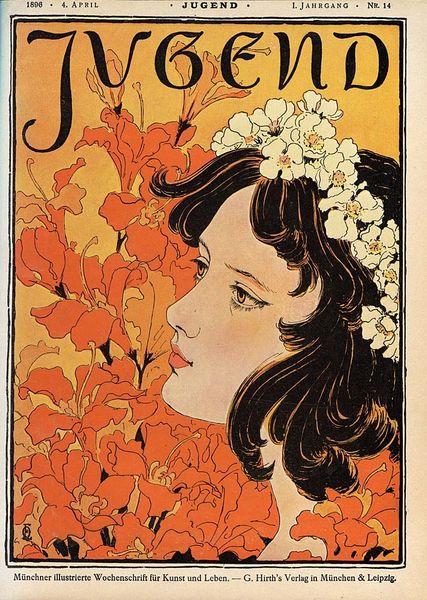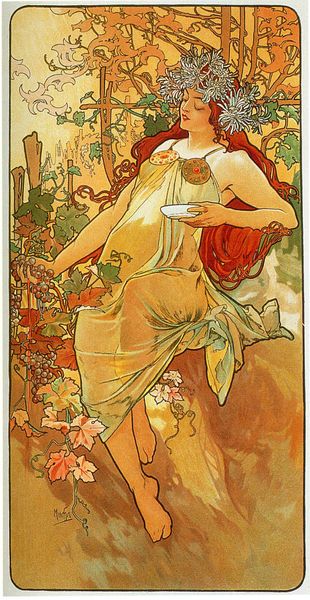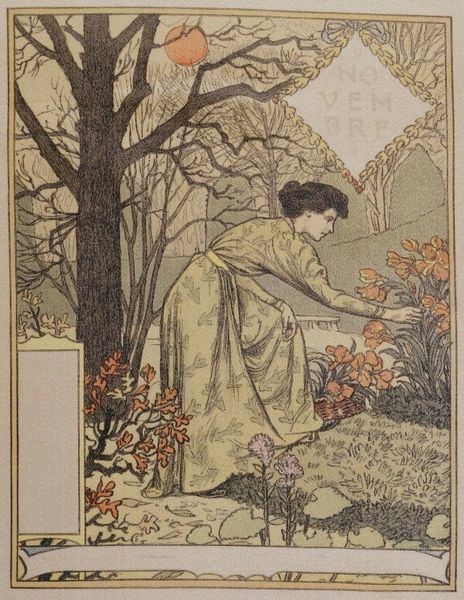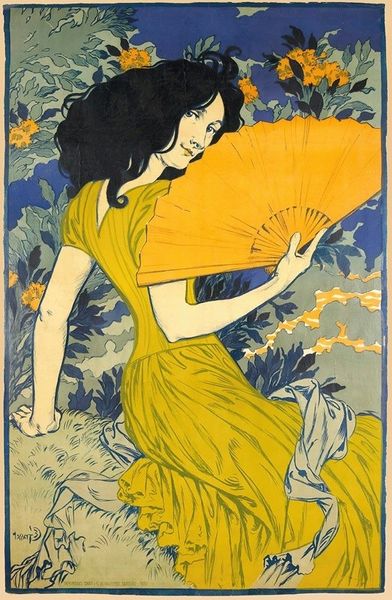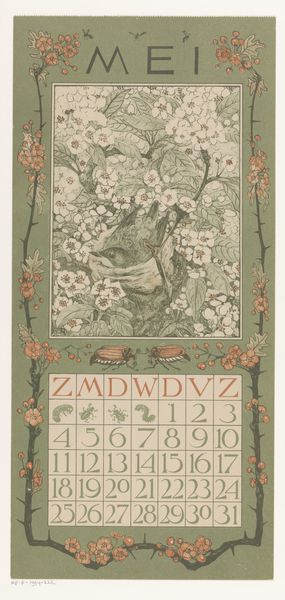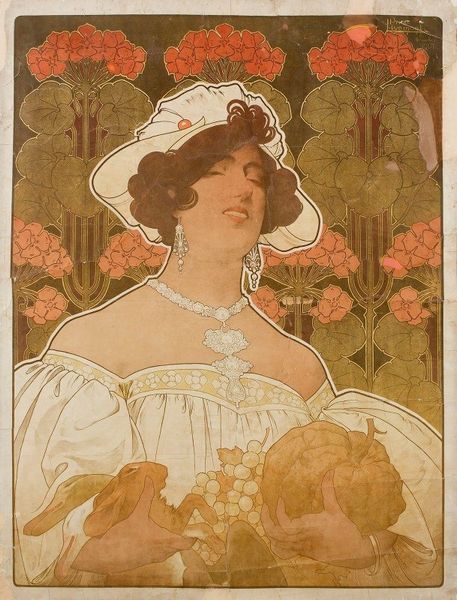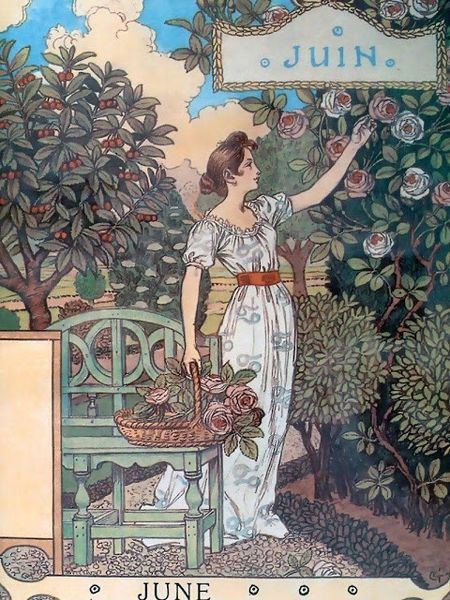
poster
#
art-nouveau
#
landscape
#
figuration
#
poster
Copyright: Public Domain: Artvee
Curator: Louis Rhead's poster "April, May, June" from 1896 certainly captures a particular mood, doesn’t it? The languid figure, the sunflowers...it feels very turn-of-the-century. What strikes you most about it? Editor: Well, aside from how beautifully Art Nouveau it is, I notice how the woman is just kind of… collapsing against the calendar. She seems really tired. What do you see in this piece beyond the aesthetic appeal? Curator: Absolutely. I think we need to consider the broader context of women's labor in the late 19th century. Industrialization and urbanization had created new roles for women, but these were often accompanied by grueling working conditions. Editor: You think she might be a representation of the working woman then? Curator: It's one possibility. Perhaps Rhead is commenting on the exhausting nature of modern life for women. Note her ornate clothing juxtaposed with that weariness in her face. Is she a participant or a victim in this rapidly modernizing world? The sunflowers themselves, while beautiful, could symbolize the constant pursuit of light, of progress, which demands so much from the individual. The figure being literally part of the calendar too implies a strong binding. It feels like it transcends a pretty image. What do you think about that tension between beauty and exhaustion? Editor: That's fascinating! I was just seeing a pretty picture, but now I'm thinking about all the pressures on women, even back then, masked by these beautiful art aesthetics. I definitely learned something new. Curator: Precisely. It encourages us to ask important questions. To consider whose stories and realities were perhaps less visible in those beautiful, ornate images from the past.
Comments
No comments
Be the first to comment and join the conversation on the ultimate creative platform.
